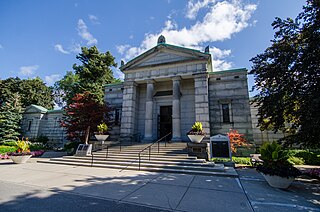
Mount Pleasant Cemetery is a cemetery located in Toronto, Ontario, Canada, and is part of the Mount Pleasant Group of Cemeteries. It was opened in November 1876 and is located north of Moore Park, a neighbourhood of Toronto. The cemetery has kilometres of drives and walking paths interspersed with fountains, statues and botanical gardens, as well as rare and distinct trees. It was originally laid out by German-born landscape architect Henry Adolph Engelhardt, inspired by the European and American garden cemeteries of the 19th century, and with influences from Mount Auburn Cemetery in Boston.

The Canada Trust Company was a Canadian trust company founded in 1894 in Calgary, Alberta, as the General Trust Corporation of Canada. In 1899, it was acquired by the Huron and Erie Savings and Loan Society, which moved the company to London, Ontario, and changed its name to the Canada Trust Company.

The Imperial Bank of Canada was a Canadian bank that operated from 1873 to 1961. In 1961, Imperial merged with the Canadian Bank of Commerce to become the Canadian Imperial Bank of Commerce.

The Canadian Bank of Commerce was a Canadian bank that operated from 1867 to 1961. It merged in 1961 with the Imperial Bank of Canada to form the Canadian Imperial Bank of Commerce, which today is one of Canada's Big Five banks.
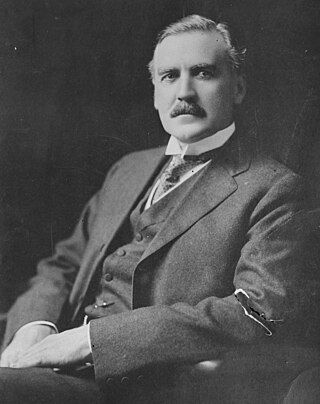
Sir William Thomas White, was a Canadian politician and Cabinet minister. He served as minister of finance from 1911 to 1919 under Prime Minister Robert Borden. As finance minister, White introduced the income tax to help fund Canada's World War I efforts.

Richard Bladworth Angus was a Scottish-Canadian banker, financier, and philanthropist. He was a co-founder and vice-president of the Canadian Pacific Railway, president of the Bank of Montreal, president of the Royal Victoria Hospital, Montreal, president of the Montreal Art Association, and co-founder and president of the Mount Royal Club. He was the natural successor to Lord Mount Stephen as president of the Canadian Pacific Railway in 1888, but he did not desire the position; he twice refused a knighthood. The CPR Angus Shops were named for him, as was one of the later CP Ships.

The Canada Life Assurance Company, commonly known as Canada Life (Canada-Vie), is a Canadian insurance and financial services company with its headquarters in Winnipeg, Manitoba. The current company is the result of the 2020 amalgamation of The Great-West Life Assurance Company, London Life Insurance Company and The Canada Life Assurance Company, along with their holding companies. The company is a wholly owned subsidiary of Great-West Lifeco.

Saint Jacques Street, or St. James Street, is a major street in Montreal, Quebec, Canada, running from Old Montreal westward to Lachine.
George Albertus Cox was a very prominent Canadian businessman and a member of the Senate of Canada.

Sir Joseph Wesley Flavelle, 1st Baronet was a Canadian businessman.

The Imperial Munitions Board (IMB) was the Canadian branch of the British Ministry of Munitions, set up in Canada under the chairmanship of Joseph Wesley Flavelle. It was formed by the British War Cabinet to alleviate the Shell Crisis of 1915 during the First World War. The Board was mandated to arrange for the manufacture of war materials in Canada on behalf of the British government.

Trustco Bank is a commercial bank within the United States. Trustco was founded in Schenectady, New York in 1902 and is headquartered in Glenville, New York. Trustco has 145 branches spread among New York, Florida, Massachusetts, New Jersey, and Vermont. Trustco Bank is an Equal Housing Lender and an Insured member of the Federal Deposit Insurance Corporation. The company operates under the slogan, "Your Home Town Bank."
RBC Dominion Securities was the brand used by Royal Bank of Canada for full service brokerage services, primarily in Canada, and formed part of RBC's Wealth Management and Capital Markets divisions. Today, RBC Dominion Securities is known as RBC Capital Markets and RBC Wealth Management.
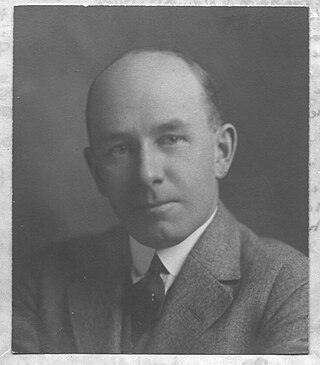
Frank Porter Wood was a Canadian businessman and philanthropist. He is best remembered for his many gifts and bequests of artworks to the Art Gallery of Ontario in Toronto.
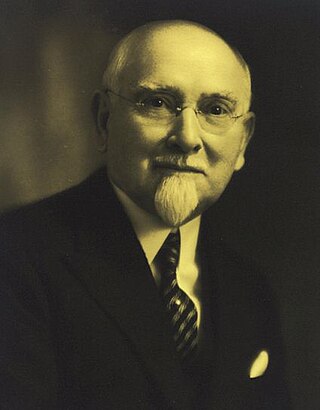
Edward Rogers Wood was a prominent financier in Canadian business. He was notable for his role in the development of the Brazilian Traction, Light and Power Company Limited and for his links with the "Peterborough Methodist Mafia" of George Albertus Cox.

The Montreal Trust Company is a Canadian trust company that has existed since 1889. In 1967, Paul Desmarais acquired minority control of the company. The following year, he transferred his shares in the company to the Power Corporation of Canada, which in 1972 increased its share to a majority. In 1982, Montreal Trust formed a sister company called the Montreal Trust Company of Canada, and both companies were placed under a parent called Montreal Trustco Inc. In 1989, BCE acquired Montreal Trustco for $875 million. BCE ran the company at substantial loss for the next five years and sought a buyer in the summer of 1993. In the spring of 1994, the Bank of Nova Scotia acquired the company for $292 million, and since that time it has operated as a subsidiary.
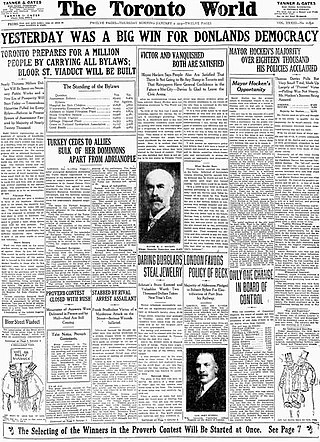
The Toronto World was a Canadian newspaper based in Toronto, Ontario. It existed between 1880 and 1921, and a Sunday edition operated from 1891 to 1924. Founded by William Findlay "Billy" Maclean, it was popular among Toronto's working class and similar in style to The New York Herald. It was said to be the "editorially boldest" of the Toronto press, and was notable for its irreverence, noisy exposés of civic corruption, skilful skirting of the libel laws, and opposition to the religious establishment. Journalists such as Hector Charlesworth, Joseph E. Atkinson and John Bayne Maclean first worked there, before moving on to senior positions at other publications.
The Royal Trust Company is a Canadian trust company that was founded in 1892 in Montreal, Quebec. By the late 20th century, it carried out trust, financial, real estate and deposit services in over 100 branches in Canada, the U.S. and overseas. In 1993, the company was bought by the Royal Bank of Canada, and Royal Trust is now part of RBC Wealth Management.

The Dominion Life Assurance Company was a Canadian life insurance company that existed from 1889 to 1987. The company was founded by a group of businessmen in Waterloo, Ontario and was built over the ensuing decades by managing director Thomas Hilliard. At the end of World War II, Dominion was Canada's ninth-largest life insurance company.


















